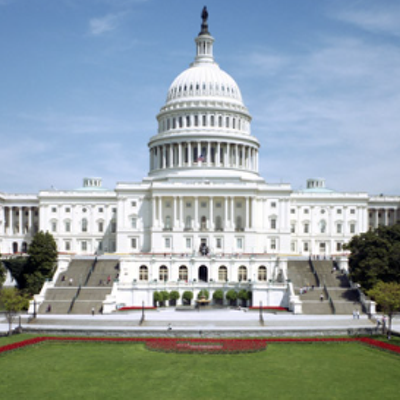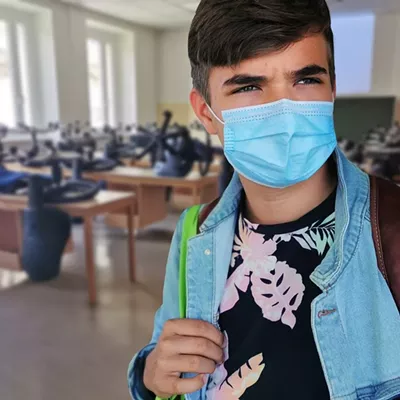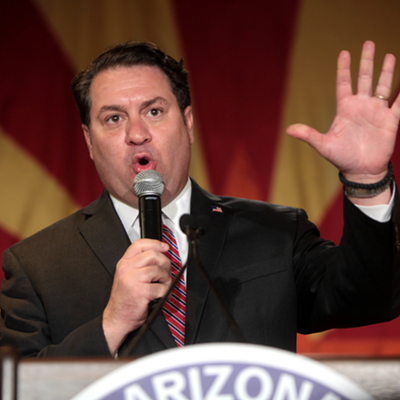Last week's primary set the stage for the November election. The Skinny has seven takeaways about how the dust is settling and what we can expect between now and Nov. 3, when voters will decide not just the presidential contest, but also a U.S. Senate race alongside campaigns for congress, the Arizona statehouse, county offices and more.
1. Kelly vs. McSally is Arizona's marquee race
of 2020
Martha McSally dispatched GOP challenger "Demand" Daniel McCarthy, capturing 75 percent of the vote. Now she has to face Democrat Mark Kelly, the retired NASA astronaut who is leading McSally in the polls.
Arizona officially became a battleground state in 2018, when McSally lost her 2018 Senate bid to Democrat Kyrsten Sinema. (Gov. Doug Ducey later appointed McSally to complete the late Sen. John McCain's term.) Both McSally and Kelly have already spent north of $20 million on their campaigns and McSally still has $11 million to spend, while Kelly has $21 million. On top of that, independent campaign committees are expected to spend tens of millions more before the race is settled in November.
McSally has consistently trailed Kelly in the polls, sometimes by double digits, and even Republicans are acknowledging that she is in deep trouble.
McSally has focused her campaign against Kelly on his minor business ties with China, saying the retired Navy combat pilot is a pawn of Beijing. Kelly has focused his campaign on health care, pointing out McSally's votes to eliminate protections for people with preexisting health conditions and to significantly slash funding for Medicaid, on which many low-income Americans rely. Count on this one getting very dirty before Election Day.
2. Democrats have the advantage in Southern AZ congressional races
While anything can happen, Democrats are favored in Southern Arizona districts as Team Blue continues to lead generic national polls; on average, according to political poll tracking website FiveThirtyEight, 48.5 of those polled say they would support a Democratic candidate for Congress, while 40.9 say they would support a Republican candidate.
In Congressional District 1, Rep. Tom O'Halleran had 59 percent of the vote against primary challenger Eva Putzova in last week's Democratic primary. As he seeks a third term in this competitive congressional district, O'Halleran will face farmer and attorney Tiffany Shedd, who captured 55 percent of the vote against Oro Valley attorney Nolan Reidhead. O'Halleran has a big fundraising advantage over Shedd; as of June 30, O'Halleran had raised more than $2 million for the race and still had $1.3 million in bank. By contrast, Shedd had raised roughly $625,000 and had $214,000 left in the bank. The Cook Political Report puts CD1 in "lean Democratic" column.
District 1 includes Oro Valley, Marana, parts of Pinal County, much of eastern rural Arizona, Flagstaff and some of the northern Arizona Native American reservations.
In Congressional District 2, Rep. Ann Kirkpatrick captured 77 percent of the vote against primary challenger and attorney Peter Quill. In November, she'll face Brandon Martin, who captured 43 percent of the vote to defeat Noran Eric Rudan, who owns a local pest control company, and Joseph Morgan, a government employee who works at Pima Community College. While CD2 is competitive on paper (with a voter breakdown that's roughly one-third Democratic, one-third Republican and one-third independent), Kirkpatrick goes into the general with a huge cash advantage over Martin, at least as of the most recent campaign finance reports. Through the end of June, Kirkpatrick had raised more than $1.4 million and had $751,000 in the bank, while Martin had raised just $186,000 and had just $33,000 in the bank. Congressional District 2 includes the eastern half of Tucson and the Catalina Foothills area as well as Cochise County. The Cook Political Report puts CD2 in the "Solid Democratic" column.
Congressman Raul Grijalva, who revealed last week that he had tested positive for coronavirus, did not have a primary opponent, but in the November general election, he will face Republican Daniel Wood, who is making his first bid for office in this heavily Democratic district that includes the west side of Tucson as well as Yuma.
3. UPSETS DO HAPPEN
In the biggest shocker
of the primary election, former state lawmaker Matt Heinz knocked out Pima County Supervisor Ramon Valadez, who has served on the board since he was first appointed in 2003.
Heinz, who also works as an emergency room doctor, captured 53 percent of the vote to Valadez's 34 percent in District 2, which stretches along the southside from downtown Tucson to Sahuarita.
In the general election, Heinz will face Republican Anthony Sizer, who has previously run unsuccessfully for the Arizona Legislature. While growth in Sahuarita has narrowed the Democratic advantage in the district, it still leans toward Team Blue.
How rarely does an incumbent supervisor lose a primary? It hasn't happened in nearly a quarter century, when John Even knocked out Paul Marsh in the 1996 GOP primary in District 4.
4. speaking of upsets, Democrats have a shot at picking up the District 1 seat on the Pima County Board of Supervisors
In the four-way District
1 GOP primary to replace Republican Ally Miller, Steve Spain came out on top, winning 33 percent of the vote. A political newcomer who had the endorsement of Miller, Spain defeated Oro Valley Town Council member Rhonda Piña, former state lawmaker Vic Williams and former Pima County Republican Party chair Bill Beard.
Spain will now face Democratic candidate and former school administrator Rex Scott in the general election for this northside district that includes Marana, Oro Valley, Casas Adobes and the Catalina Foothills.
5. Speaking of the Board of Supes: Here's what the other races look like.
The remainder of the
November races for Board of Supes does not look especially competitive. In District 5, TUSD Board member Adelita Grijalva, daughter of Congressman Raul Grijalva, defeated Sunnyside School Board member Consuelo Hernandez. Grijalva, who captured 67 percent of the vote, will face Republican Fernando Gonzales in the race for the board seat formerly occupied by the late Richard Elias.
In District 3, Supervisor Sharon Bronson easily won her primary race last week with 58 percent of the vote against Juan Padres, whose main argument against Bronson was that she was too old—not necessarily the best message when primary voters tend to trend older. Bronson will face perennial GOP candidate Gabby Mercer in November.
In District 4, Supervisor Steve Christy defeated challenger John Backer in the GOP primary with 65 percent of the vote. Christy will face Democrat Steve Diamond in this GOP-leaning district that includes Tucson's east side, Vail and Green Valley.
6. There's big change coming to the Pima County Attorney's Office
Laura Conover won the
Democratic primary for Pima County Attorney and faces no Republican opposition in November. The defense attorney captured 58 percent of the vote against two prosecutors who were seeking the office, Jonathan Mosher, who won 36 percent, and Mark Diebolt, who captured 6 percent. While it would have been tough for a defense attorney to win this post in the past, the push for criminal justice reform in 2020 made this her year. "What we have is a strong majority calling for criminal justice reform," Conover said. "That's a powerful message and I'm honored to be the one who gets to carry the mandate forward."
7. Pima County has some races worth watching in the general election
Democrats running
countywide in Pima County have a significant voter-registration advantage, but several of the races are worth following.
The race for sheriff is a rematch. In the Democratic primary for Pima County Sheriff, Chris Nanos, who was appointed the seat in 2015 but lost it after a procurement scandal erupted on his watch, captured 67 percent of the vote against Deputy Kevin Kubitskey, a union leader whose campaign erupted in scandal in July after his daughter accused him of abusing her. Nanos' win sets up a rematch against Republican Mark Napier, who defeated Nanos four years ago.
"The primary was a good first step and we're very excited. The win certainly helps jazz the team up," Nanos said. "We have a lot of work ahead of us."
In the primary race between two Democrats who are seeking to replace the retiring F. Ann Rodriguez as Pima County's chief keeper of records, Gabriella Cázares-Kelly, an organizer with Indivisible Tohono, won 64 percent of the vote against Kim Challender, who has worked as Rodriguez's chief deputy.
Cázares-Kelly will face Republican Benny White, a longtime GOP activist who has served on the county's Election Integrity Committee.
In the primary to replace the retiring Assessor Bill Staples, Suzanne Drobie won 58 percent of the vote against Brian Johnson and Dustin Walters. She faces no Republican opposition for the seat.
Republican incumbent Treasurer Beth Ford was unopposed in her primary race. She'll face Democrat Brian Bickel in November.








